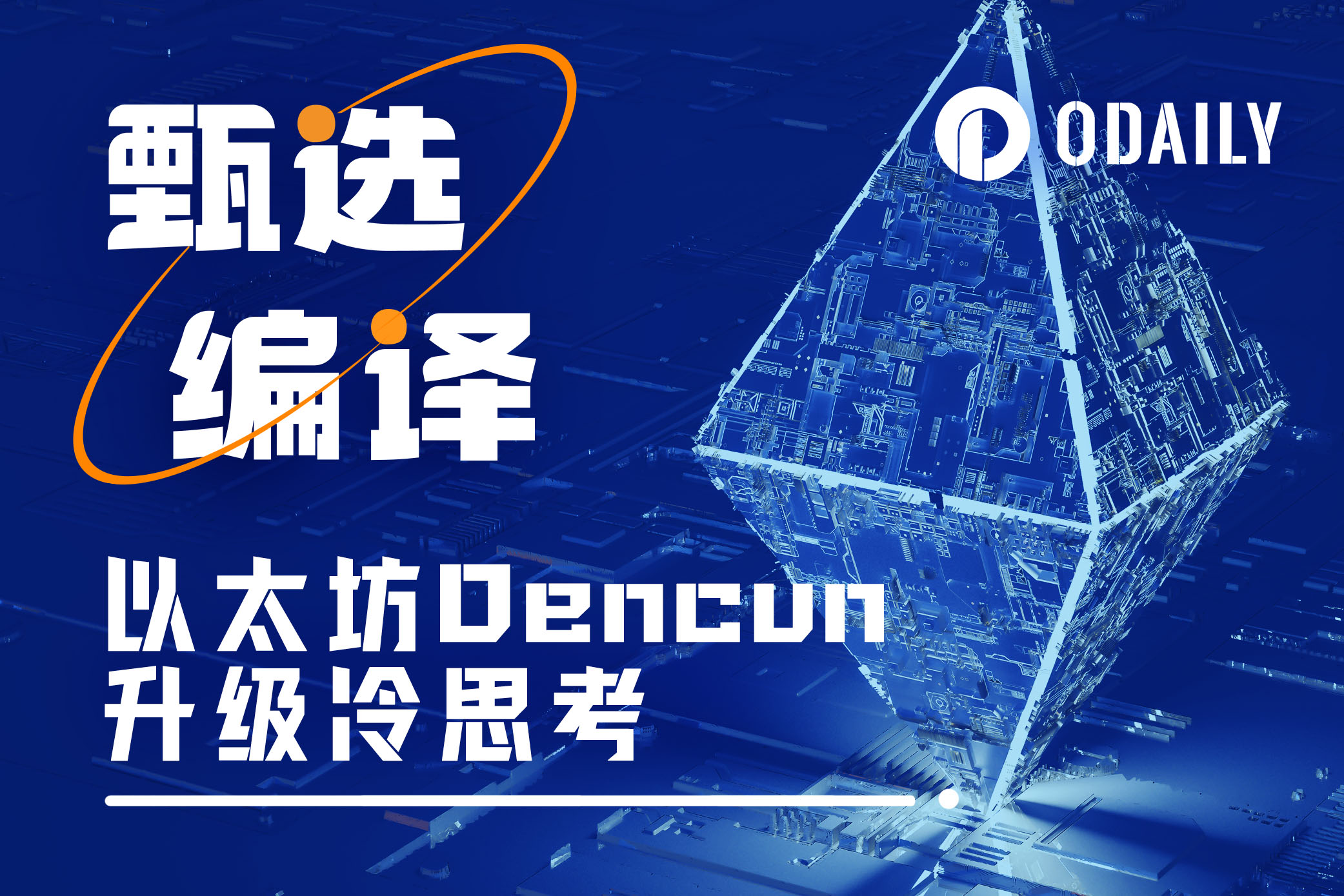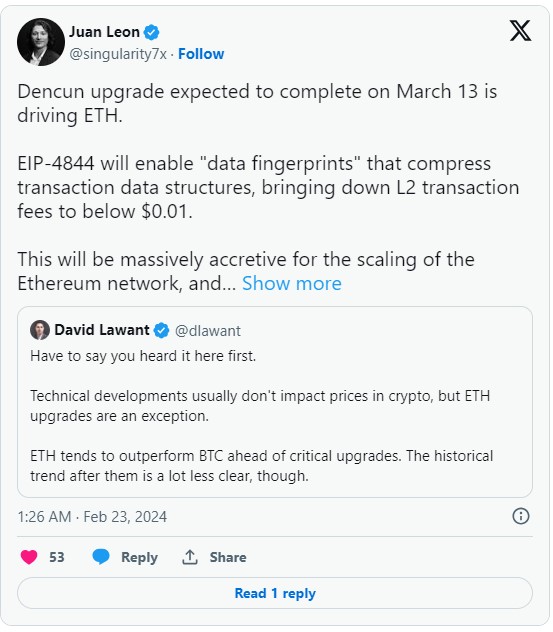This article is from Cointelgraph, authored by Nebojsa Urosevic
Translated by Odaily | Moni

For the cryptocurrency industry, the scalability issue of Ethereum seems to have been apparent from the beginning, especially as the use cases continue to grow and the existing technology cannot handle a large number of transactions. Implementing innovative solutions to expand the network is imperative.
If all goes well, the Ethereum Dencun upgrade will take place on March 13th. Although this is an important step in the right direction, some community members believe that Dencun is just a short-term patch, and Ethereum needs a sustainable long-term solution.
Is Dencun a temporary solution?
The Dencun upgrade aims to enhance the scalability of Ethereum and is currently being deployed on the testnet. Although there was a delay in the upgrade of the Goerli testnet due to a bug, the deployment on Sepolia and Holesky has been smooth.
Dencun introduces the concept of "proto-danksharding" to reduce transaction costs by using the "blob" format instead of "calldata". Blob will temporarily make transaction data available in a "compressed" format, significantly improving storage efficiency and being more cost-effective than calldata (it is claimed that it can reduce costs by 80% to 90%). The subsequent shard upgrades will also use the same format. Overall, the Dencun upgrade will bring higher storage efficiency, lower gas fees, and a better experience for developers, while making Rollups more cost-effective.
Bitwise Invest researcher Juan Leon suggests that IP-4844 will enable the use of "data fingerprints" for compressing transaction data structures, reducing L2 transaction fees to below $0.01. This will greatly facilitate the scalability of the Ethereum network and pave the way for mainstream consumer applications (where transaction costs become negligible, a significant barrier to entry). FalconX research director David Lawant also shares a similar view, adding that "technological developments usually do not affect the price of cryptocurrencies, but ETH upgrades are an exception. Prior to key upgrades, ETH often outperforms BTC."

While the Dencun upgrade is a step in the right direction, it is not a permanent solution. The focus of this upgrade is to make data storage more efficient, which is undoubtedly beneficial. However, the long-term issue facing the Ethereum network is capacity, and the future development focus must be on expanding network capacity to support the increasing number of transactions being executed. From this perspective, a multi-chain solution may be easier to achieve this goal.
The Road Ahead: Rollups and AppChains
A multi-chain solution, such as Rollups and AppChains, is a long-term ideal mechanism for increasing Ethereum's capacity.
An AppChain, also known as an application-specific blockchain, has its own dedicated processing power and storage, aimed at serving a single application. AppChains can be built on top of larger mainnets, such as Ethereum or even L2 blockchains, to offload on-chain transactions from the mainnet and have them processed by the AppChain. If widely adopted, AppChains can greatly increase Ethereum's capacity.
Rollup technology can be used to build an AppChain, but the difference is that Rollups primarily handle off-chain transactions – transactions are executed off-chain and then "rolled up" into a single transaction feedback to the mainnet. Rollups are generally less efficient than AppChains because they often rely more on the main chain for security and have lower customizability. However, they still offer some flexibility and are easier to deploy and manage.
Since both have their own advantages, combining the transaction efficiency of Rollups with the flexibility and customizability of AppChains can achieve synergy. Developers can also benefit from expanding beyond the L1 network and into more scalable and versatile environments, allowing for the design and deployment of blockchain applications that meet the needs of user groups while maintaining high levels of efficiency and security.
By increasing capacity, throughput, reducing latency, and improving resource management, multi-chain solutions enable networks to handle larger transaction volumes while maintaining optimal performance.
How to address the blockchain trilemma besides Dencun?
Developers have been trying to solve the blockchain trilemma, attempting to find a balance between scalability, security, and decentralization. Multi-chain solutions emphasize interoperability and security, which may help Ethereum fully realize its potential.
Frankly speaking, implementing multi-chain solutions on the Ethereum network also brings a series of unique challenges for developers. Currently, one of the main obstacles of multi-chain solutions is the overly complex management of interoperability between different chains. Therefore, the immediate focus should be on cross-chain communication protocols and integration technology, as well as ensuring consistent security measures across multiple chains. In addition, overcoming these challenges requires a comprehensive understanding of the involved technologies and a commitment to creating an accessible and developer-friendly environment to facilitate seamless integration and effective utilization of multi-chain solutions.
The future development of Ethereum is promising, and industries such as finance, identity, gaming, supply chain, healthcare, food supply, and many others have already started benefiting from the Ethereum network. However, rapid growth also comes with growing pains.
Capacity is becoming an increasingly worrisome issue for Ethereum. Although the Dencun upgrade can help address this problem by improving efficiency, at this stage, this solution is more like a "band-aid". Therefore, in the long run, the best way forward is still to increase capacity, and multi-chain solutions such as application chains and Rollups might be a good idea.